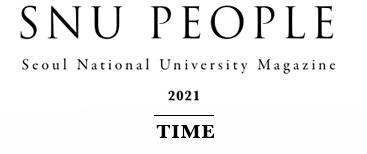Research
Note II
Wisdom for Coexistence Delivered
from Demography to Korea
гҖҢPopulation Future CoexistenceгҖҚ

A huge amount of the governmental budget is used to address the low birth rate, but the birth rate is decreasing each year. A change is needed in the governmentвҖҷs policy. IвҖҷd like to propose вҖҳthe strategy of coexistenceвҖҷ as a new paradigm of the population policy. The coexistence in ecology is a method of survival to avoid competition by changing the time.
Written by Professor Cho, Youngtae of the Graduate School of Public Health
I published my first book The Determined Future in the summer of 2016. As demography was very unfamiliar at that time, many readers may have considered as a fresh new approach the argument that I described in the book that the future of Korea may be predicted only with the demographical factors, such as the births, deaths and population movement.
Was it because of the title of the book that suggested that many aspects of the future are already determined by the population today? Some of the readers considered my argument as a demographical fatalism. The true message that I wanted to deliver to the readers was that the population today has already formed the macroscopic aspects of the future of our society and thus we individuals can make the best future based on the predictions.
ThatвҖҷs why I recently published a new book, Population Future Coexistence. My message contained in this book is the normative hope that our readersвҖҷ interests should not stop at seeing the determined future but develop to the point of planning our future society.
There were two kinds of concerns that I had when writing Population Future Coexistence. One was the title of the book. Anyone who has written a book will understand the concerns about the title. If there is a previous book that has drawn peopleвҖҷs attention, the authors usually try to include a part of the title of the previous book in the title of the new book. I was also tempted to include in the title of the new book the title of the previous book, The Determined Future, which became like my trademark. However, I also wanted to make it clear from the title of the book the motivation of writing the book, which was to help the readers to plan their own future beyond the determined future. Therefore, I boldly gave up вҖҳThe Determined FutureвҖҷ and brought вҖҳpopulation and futureвҖҷ to the forefront.
The other concern was the tables and plots that are full of statistics. Demography is based various types of population statistics. The population information is mostly statistical data about how many people live in Seoul and how long we live in average. In my previous book about population, The Determined Future, I included no table of statistics and just added two plots. The reason was because I really wanted to let the readers know that the society that demography describes, especially the future society, is not merely about numbers. However, in the new book, which was written for the planning of the future based on the variation of the population, it was impossible to show the readers the aspects of our future without accurate statistics. The readability of a book is decreased if there are too many statistics. So, it was an extremely difficult decision whether I have to focus on the accurate delivery of the information or the readability of the book. Eventually, I chose the accurate delivery of the information, and included 35 graphs in the book. Again, it was because I wanted to make it clear that the book was written to help the readers to create their own future.

In addition to the planning of the future, I wanted to propose the future directions of the population policies of Korea. About 230 trillion KRW has been spent to address the low birth rate in Korea, but the birth rate is decreasing each year. A change is needed in the governmentвҖҷs policy. IвҖҷd like to propose вҖҳthe strategy of coexistenceвҖҷ as a new paradigm of the population policy. The coexistence in ecology is a method of survival to avoid competition by changing the time. The strategy applies to a situation in which resources are insufficient and competition is severe to vary the time to minimize the competition, rather than simply yielding for others. The prerequisite of the success of this strategy is to know the time. We should know what changes will occur and when. ThatвҖҷs the topic of вҖҳThe Determined Future.вҖҷ The nature of the population is a part of the determined future. I argued in my new book that the population policies should be made by taking full advantage of the nature of the determined future of the population.
Obviously, I hope that my new book, Population Future Coexistence, may be enjoyed by many readers, like the previous book. At the same time, I ask the readers to develop their insights to plan the future based on my book, rather than simply reading it. Do you think that if many people plan their future, my predictions described in The Determined Future will be found wrong? I hope so! That will mean that Korea will have become a brighter and better place than expected.

